Bornean Orangutan
Pongo pygmaeus
STATUS IN THE WILD
Critically Endangered
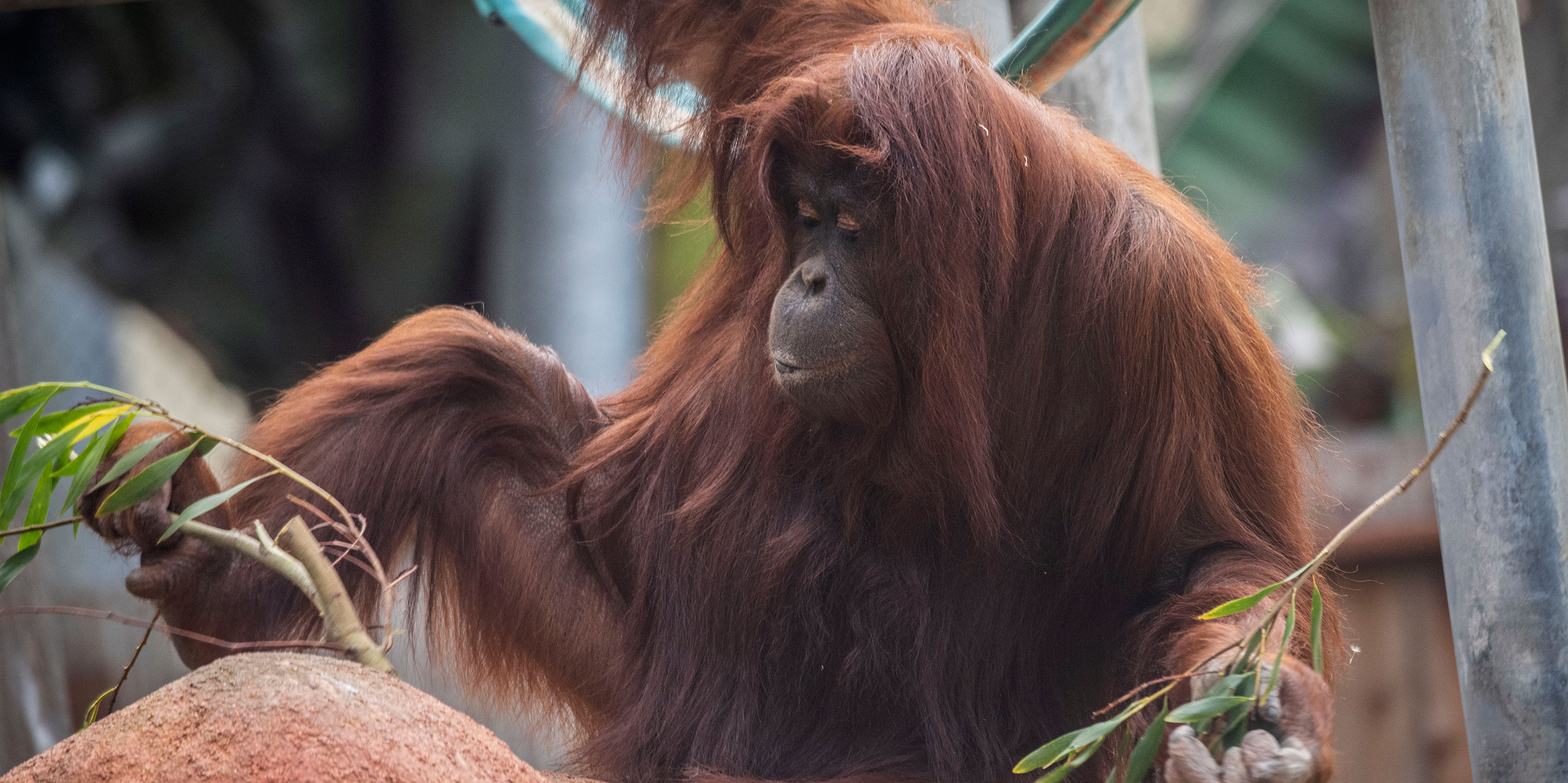
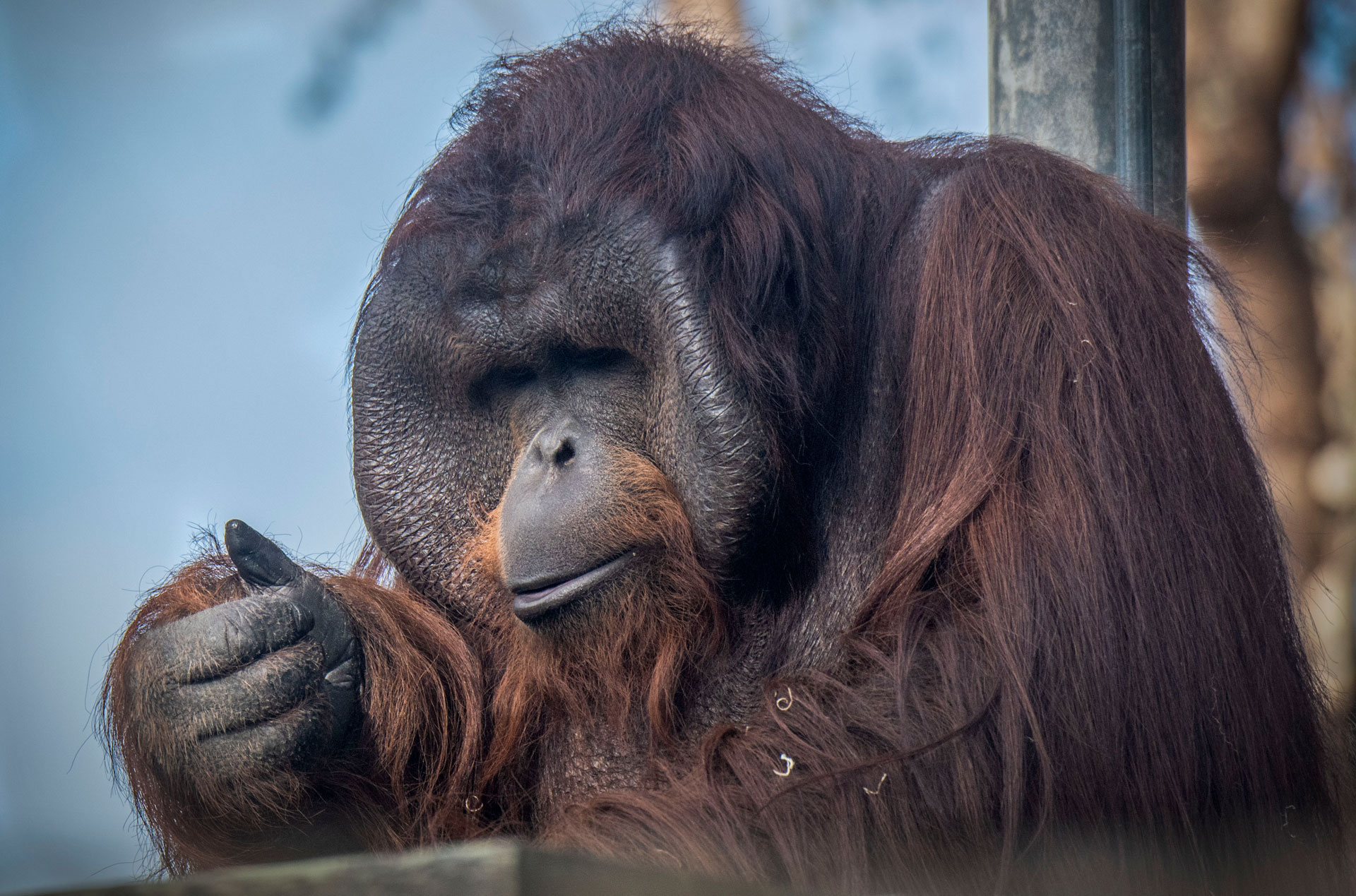
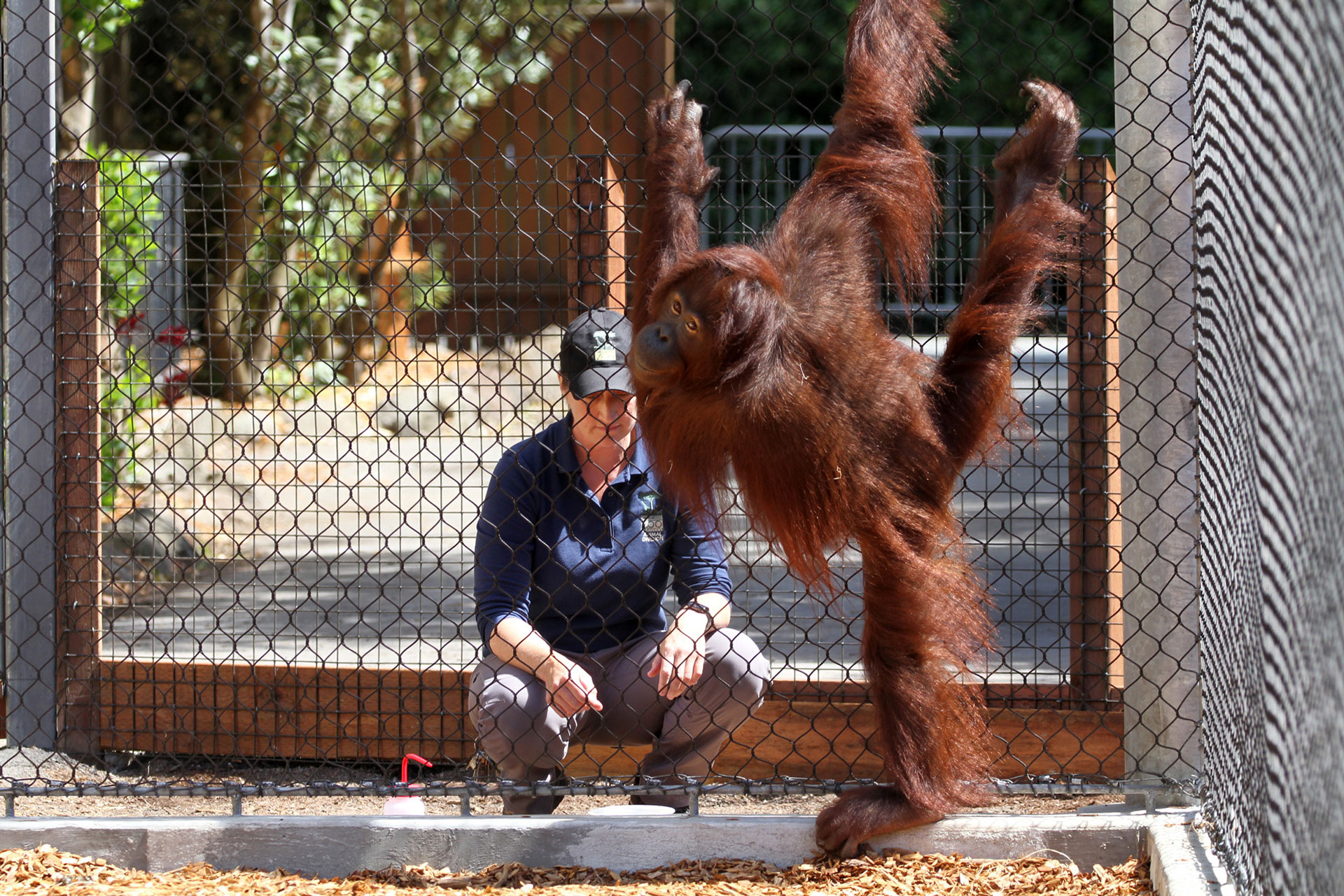
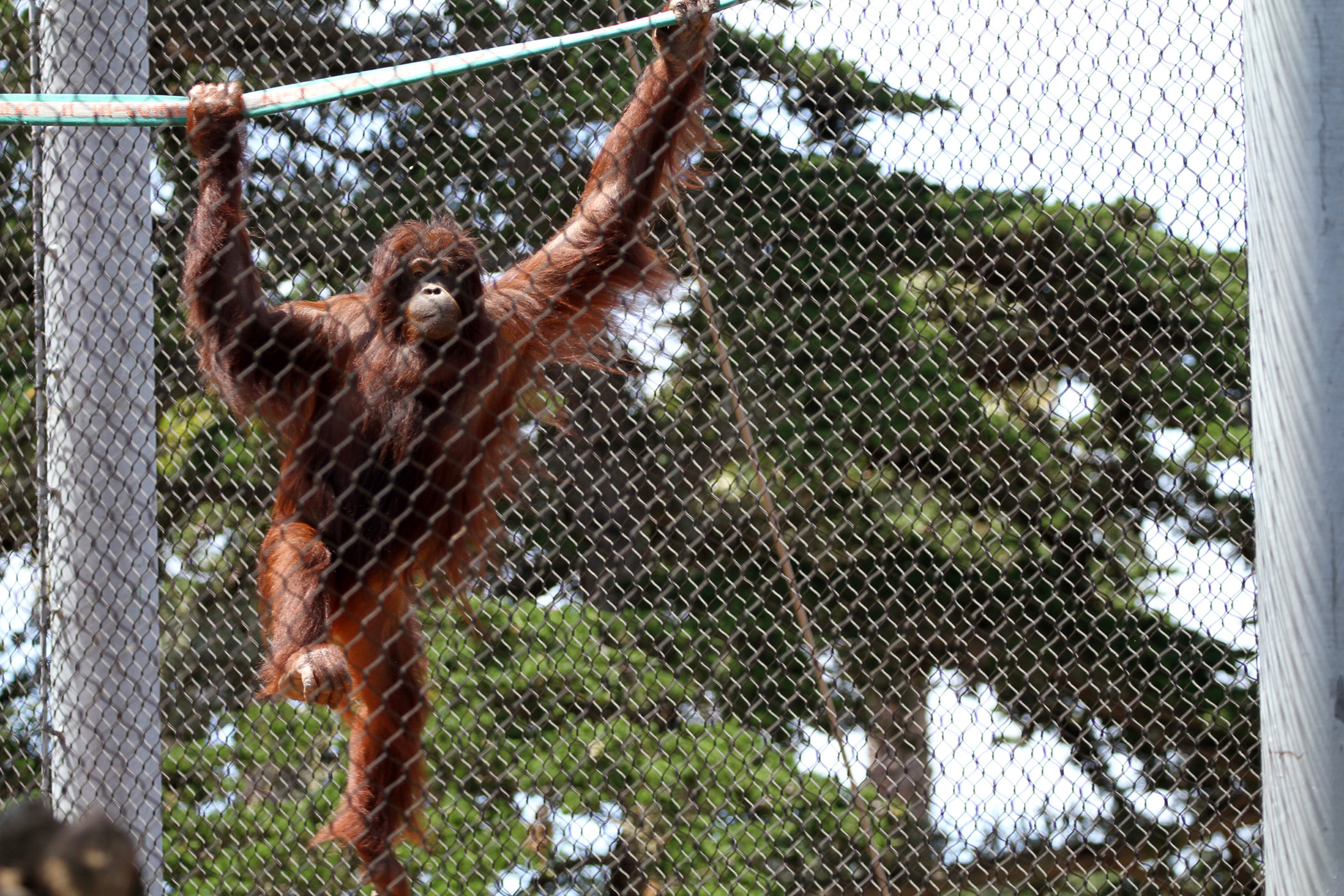
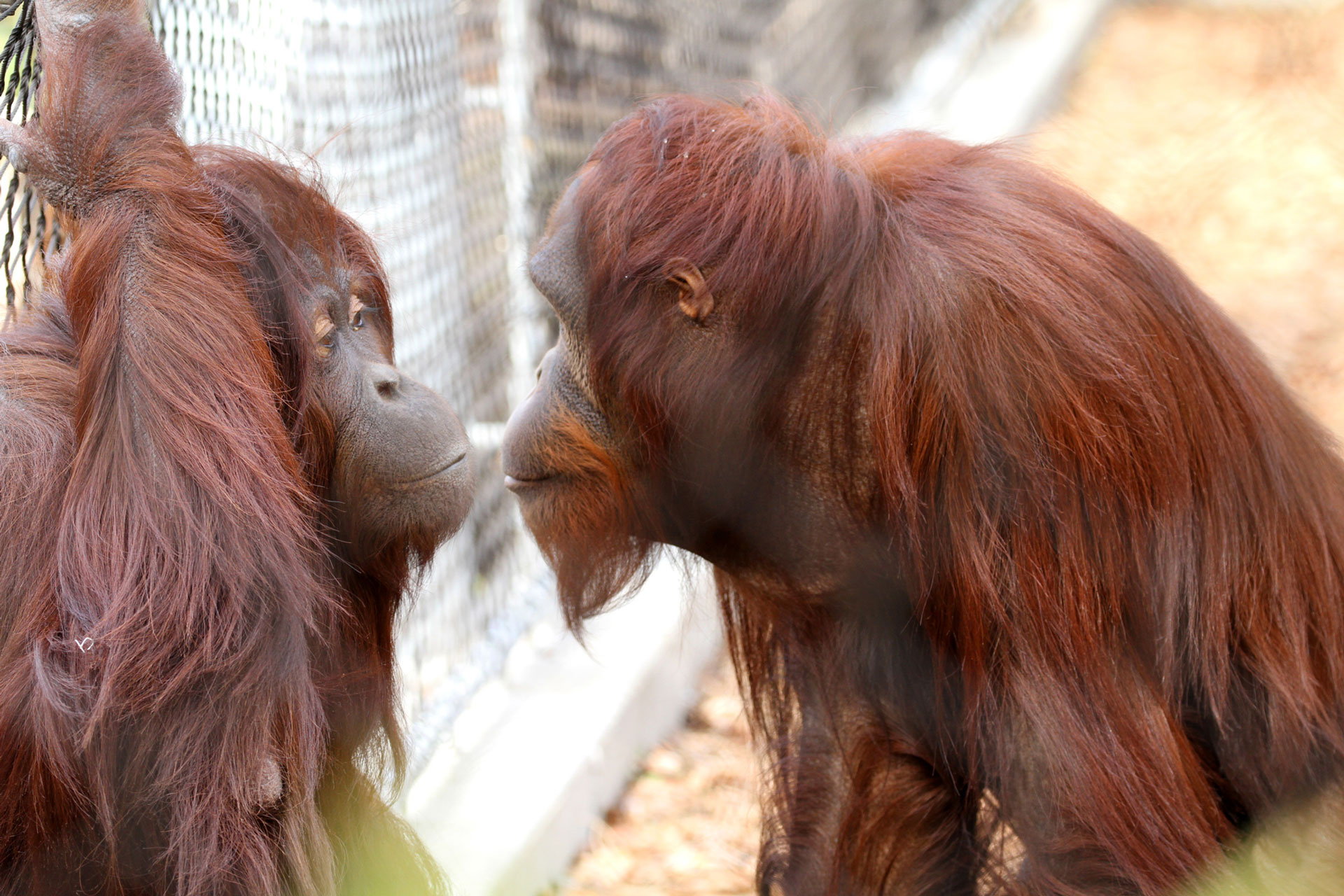
RANGE
Southeast Asian island of Borneo
HABITAT
Swampy, tropical old-growth forests
SIZE
Females 80-100 lbs. and about 3.5 feet tall
Males over 200 lbs. and about 4.5 feet tall
DIET
Fruit, but also leaves and stems, flowers, insects, bird eggs, bark and fungi
LIFESPAN
35-50 years in the wild and nearly 60 in human care
At the Zoo
You can find the orangutans at the Great Ape Passage in the area once referred to as the Triple Grotto. It has housed many primates over the years. Triple Grotto was conceived in the late 1950s as a state-of- the-art playground and habitat for our orangutans and chimpanzees. The 2019 expansion, known as the Great Ape Passage exhibit, provides the orangutans with access to overhead passages and additional outdoor space.
Fascinating Facts
- The word orangutan translates to “man of the forest” in Malay.
- Unlike other apes, they walk on their fists rather than knuckles.
- Orangutan cannot swim, which makes deforestation in swampy terrain dangerous.
- Orangutan play an important role in seed dispersal and the overall health of forests in Borneo.
Status In The Wild
Borean Orangutans are listed as critically endangered by the IUCN. Orangutans are threatened by habitat degradation, habitat destruction and habitat fragmentation. As they cannot swim, they can become increasingly isolated in smaller and smaller patches of forest as palm oil plantations replace forest habitat. These issues are compounded by naturally low reproductive rates, as females only give birth every 6-8 years.They are also threatened by the pet trade. The only predator of adult orangutans is humans.

Physical Characteristics
Bornean orangutan are the largest arboreal mammals in the world; they have reddish-orange hair, long arms and opposable thumbs (and big toes) to help navigate through trees. Both males and females have throat pouches that make it easier to communicate over long distances, although in most regards they are highly sexually dimorphic. Females are considerably smaller in size and sport fleshy cheek pads (flanges). Males exhibit different features depending on their age and social status. Younger males do not have flanges and are about the same size as females, even after they’re considered mature. After the age of 15 males may develop cheek pads if social conditions are right. Flanged males are more desirable to female orangutans.
Behavior
They are semi-solitary but may gather when fruit is plentiful and space allows. Flanged males have territories that overlap with several females, while unflanged males wander between territories (avoiding dominant males). Orangutans spend the vast majority of their time in trees and even create elaborate nests 40-60 feet off the ground using leafy tree limbs.
Reproduction
Bornean orangutan do not have a designated breeding season. Males use a “long call” to locate females in his territory and deter other males from the area. Females usually give birth to one infant after a gestation of around 245 days. Orangutan young have the longest “childhood” of any non-human mammal; they are weaned around 4 years and stay with females until they’re around 6 years. Adolescents remain nearby until the next offspring are born. Females often establish a territory near her mother while males roam until they are much older.
What you can do to help Orangutans
- Purchase wood and paper products with the FSC-certified logo, which helps support the work that others are doing to protect forests in danger.
- Visit www.cmzoo.org/palmoil to learn more about the complex issue with palm oil.
- Spread the word about orangutan conservation!
Spread the word about orangutan conservation!

